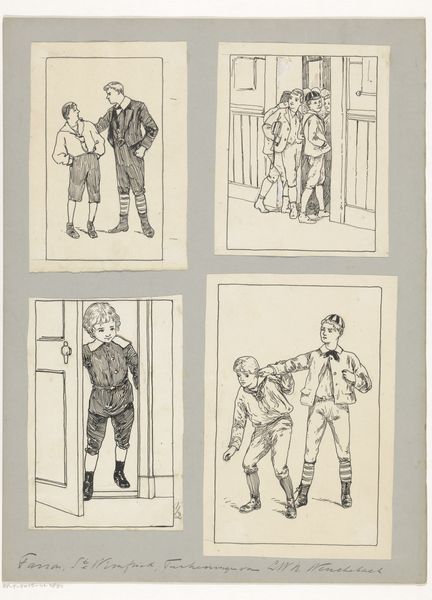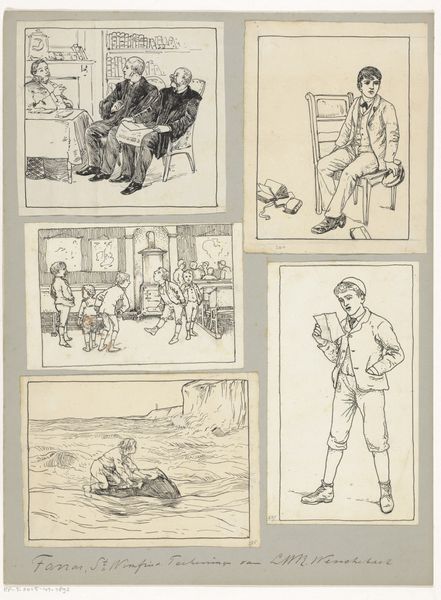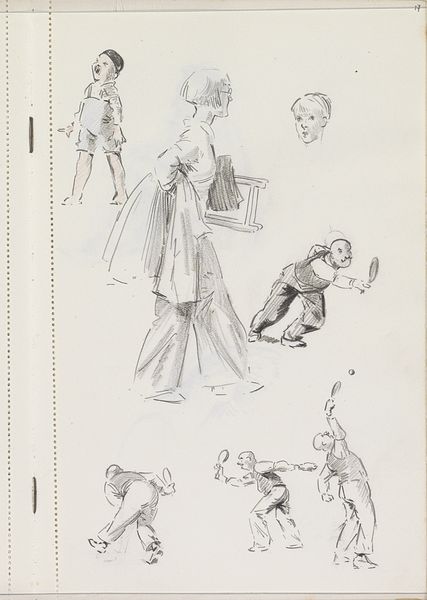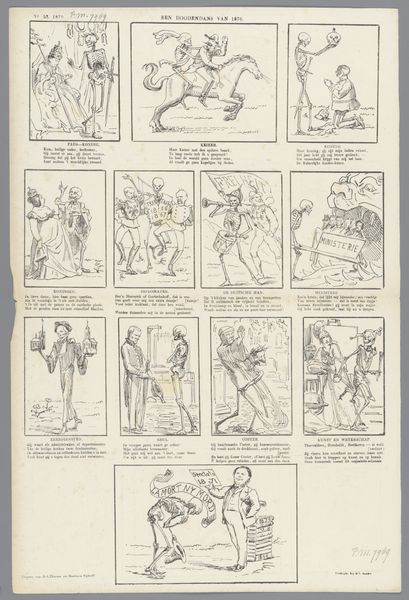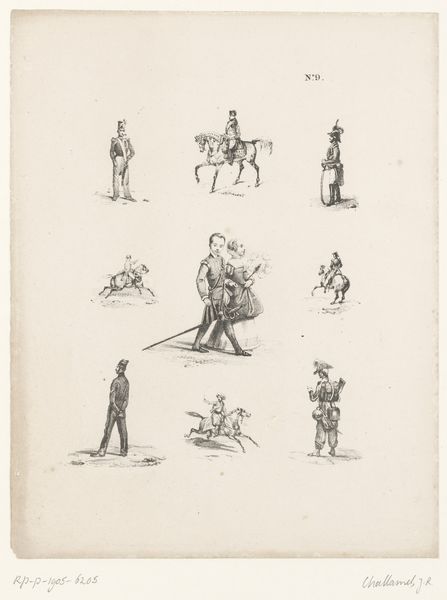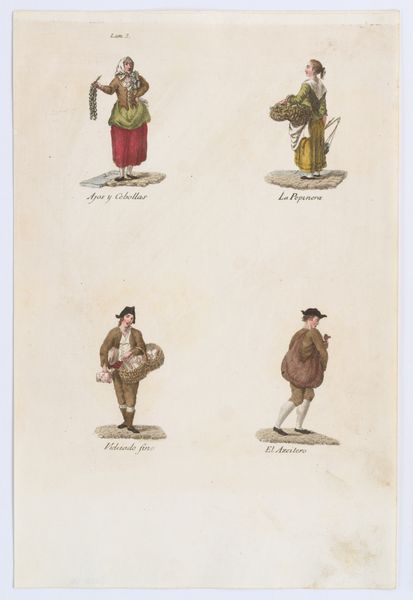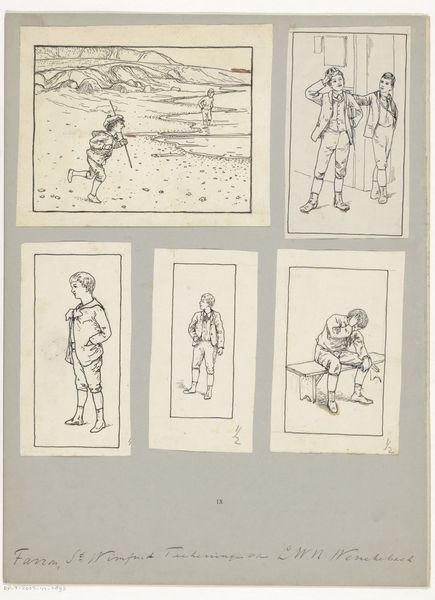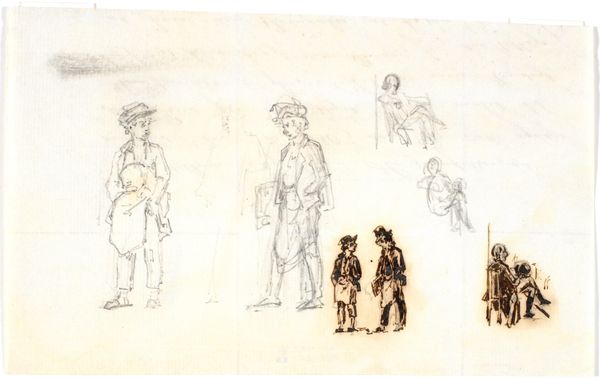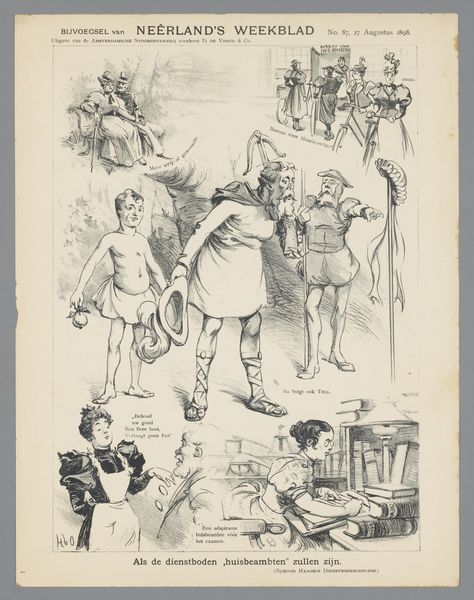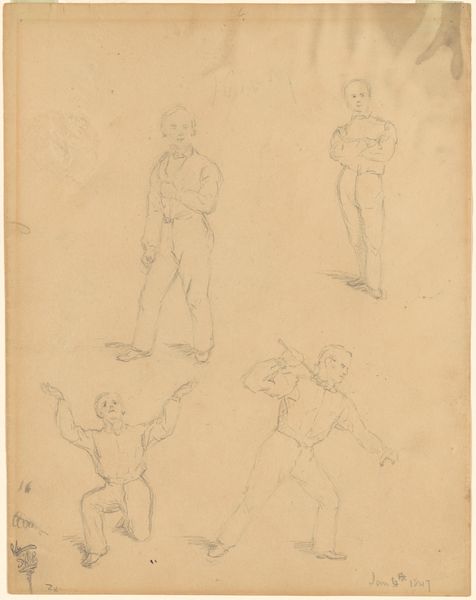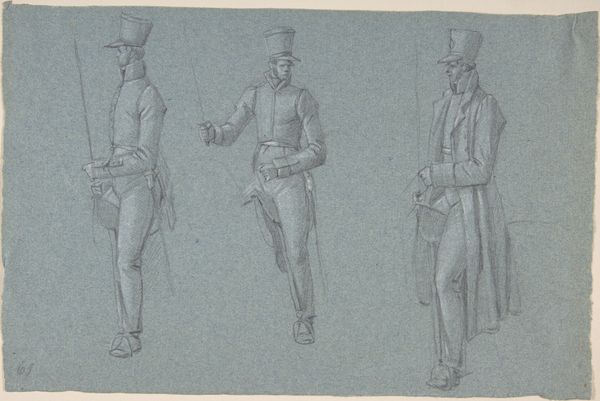
Dimensions: height 367 mm, width 275 mm
Copyright: Rijks Museum: Open Domain
Curator: This is "Acht scènes met jongens," or "Eight Scenes with Boys," a sketchbook page created before 1894 by Willem Wenckebach, now held in the collection of the Rijksmuseum. It’s done in ink on paper. Editor: My immediate sense is one of intimate observation. It feels like we are peeking into a personal sketchbook, maybe designs for character development. The casual poses, the quick linework—there’s a spontaneity that makes it so appealing. Curator: Indeed. The repetition of figures calls to mind comic strips, nascent character designs. The scenes convey the daily lives of late 19th-century youth. Notice the sailor suit and cricket bat. These evoke the cultural values placed on boyhood and the types of roles young boys occupied in Dutch society. Editor: The sailor suit has so many associations, hasn’t it? Think of the visual language associated with rank, discipline and maritime power. What psychological underpinnings of control, uniformity, and yet a distinct adventurous allure might have compelled Wenckebach? It also speaks to the social position of these boys; this was obviously an article of status. Curator: Precisely. There is also the innocence the images evoke, set against what was often a very unforgiving industrialised world. Are they symbolic representations of childhood dreams or are they comments on the performative aspect of youthful identity and privilege? These sketches create more questions than answers. Editor: The very lack of specificity in some ways universalizes the experiences these scenes suggest, wouldn’t you say? The gestures and attitudes, the moments of contemplation, boastfulness, perhaps mischief are instantly relatable. Even the sketchy, unfinished quality adds to that sense of fleeting familiarity. Curator: Absolutely. And the act of observing children, even now, prompts self-reflection. I think that psychological link is what continues to fascinate viewers. We recognize that our youthful experiences have an indelible imprint, even when fragmented and filtered through artistic representation. Editor: These figures reflect not only a certain time but also archetypal images that reflect our own formative years, the roles that define who we once were and how those experiences resonate with us today. Thanks for opening up Wenckebach’s intriguing set of vignettes. Curator: A rewarding study of how sketched impressions shape our understanding.
Comments
No comments
Be the first to comment and join the conversation on the ultimate creative platform.
